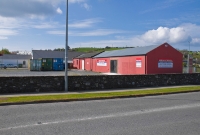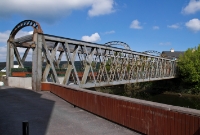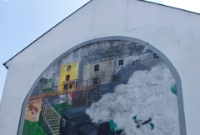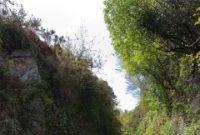Skibbereen
The large west Co.Cork town of Skibbereen was first served by rail when the Illen Valley Railway constructed a line from Drimoleague to here in July 1877. The Cork Bandon & South Coast Railway took over the IVR and extended the line south from Skibbereen to reach Baltimore in May 1893, and after which the route was effectively worked as branch from the main line at Drimoleague. In September 1886, the Schull & Skibbereen Tramway built a 3ft gauge line west from here to connect with Schull. The S&ST was the first to close in January 1947, with the Baltimore branch closing along with the rest of the west Cork lines in March 1961.
Today, the single storey 1877 built station building remains at Skibbereen, located north of the town. The building is now part of an adjacent garage, and its single platform also remains, though filled in. Until the early 2000s, the signal cabin was located at the north end of the station, but was demolished to accommodate the town's bypass road. On the north side of this road is the large corrugated iron goods shed, now used as offices, as well as the former water tower complete with tank. The lattice built railway bridge across the Illen River at the south end of the station also survives. After crossing the main street of the town via a level crossing, the railway entered a cutting which since closure has been converted into a road.
Today, the single storey 1877 built station building remains at Skibbereen, located north of the town. The building is now part of an adjacent garage, and its single platform also remains, though filled in. Until the early 2000s, the signal cabin was located at the north end of the station, but was demolished to accommodate the town's bypass road. On the north side of this road is the large corrugated iron goods shed, now used as offices, as well as the former water tower complete with tank. The lattice built railway bridge across the Illen River at the south end of the station also survives. After crossing the main street of the town via a level crossing, the railway entered a cutting which since closure has been converted into a road.















